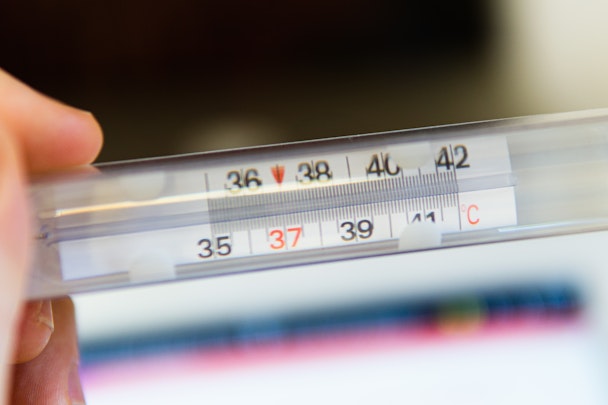Clients blowing hot and cold? What you need to know about the fever economy
The current global downturn hits differently from the economic crises we’ve faced in the past. Fortunately, writes R/GA’s Tom Morton, we know more than before about responding to client caution.

/ Unsplash
The economic downturn that is gathering pace around the world feels different from a recession – because it is.
Interest rates are chilling investment, from buying a house to funding a startup. Rising energy costs are taking money from people’s discretionary spending. Consumer confidence is freezing in Europe and the US. At the same time, demand is still outstripping supply. Economies continue to add jobs and consumer spending remains steady.
Waves of heat and cool in the same body at the same time always feel unsettling. This is a fever economy.
Advertisement
Brand owners and their agency advisors have to nurture brands through this new, feverish climate. Fortunately, we have more knowledge and more tools available to understand and adapt to this climate.
We have the data set of how brands performed in the global financial crisis. The marketing landscape is more digital. E-commerce’s share of retail is about four times greater now than it was in 2008, while digital advertising spend is about eight times bigger. Digitization also increases the speed and the possibility for new customer experiences. And we have the moral lesson from the Covid pandemic and lockdown that the brands that do best in a time of crisis are the ones that step up and help people.
Supply bottlenecks and rising prices have forced a change in consumer behavior. McKinsey reports a spike in the proportion of consumers trying new brands or retailers because their current favorites are now out of stock or out of their price range. Google reports that 87% of online shopping trips consider multiple brands. This new scarcity means that more purchases become high-consideration. Every brand now finds itself up for an audition.
So brands need to be there for the great brand audition. Invest in the consideration stage of the customer journey. If you’re not there, your customers will go elsewhere.
Advertisement
One sign of a downturn is consumer confidence. Consumer pessimism is higher now than during 2020’s Covid lockdown. American consumer sentiment is now lower than at any time since records began in the 1960s. This hits at a time when customer satisfaction is at a 17-year low. This puts existing customer bases at risk, especially when people are more open to new brands.
We now know more about the relationship between customer satisfaction and confidence. My company recently surveyed 13,000 consumers across the US to understand what really drives customer satisfaction. It turns out that about 70% of the factors that drive satisfaction are linked to confidence. This gives a new imperative to how brands design customer experience and innovation: design to create confidence. Help customers understand that they’re making the right financial decisions. Curate their options so they don’t have the mental load of too many choices. Help them master new products and services early, so they feel confident that they put their time and money into the right thing. Ease of use is an evergreen design principle: ease of mastery shows your value in a downturn.
It’s tempting for companies to dial back quality or service as they manage their costs. But this is projecting a business’s cost controller mindset on to consumers. The truth is, consumers still want high quality, value, ease of use and good times from the brands they engage with. They just have less money to pursue these good things. The task is to help customers do more with less. Some of the best innovations of the global financial crisis did this.
Suggested newsletters for you
Hyundai’s Assurance Job Loss program guaranteed six months of car payments to any Hyundai buyer who lost their job; keeping the desire to drive a new car alive during a recession. Waitrose’s Essentials range enabled shoppers to buy basic versions of gourmet foods, from fresh parmesan to balsamic vinegar, from a supermarket better known for high-end shopping.
Marketing scholars have known the cost of pausing advertising during a recession for decades. The Pims (profit impact of marketing strategy) database has data going back to the 1990s showing that brands that maintained ad spend in a downturn grew market share three times faster as the economy recovered than brands that cut spend. Now we know that the same effect applies to innovation.
McKinsey tracked the performance of innovative companies in the 2008-09 recession and found that they outperformed the general market by 30% during the next business cycle. Samsung owes some of its success in the past decade to its decision to double down on R&D and patents during the 2008-09 recession, which led to the development of the Galaxy handset. The companies that innovate in a recession win the next business cycle.
Recessions since 1945 have lasted an average of 11 months. In those times, consumers continue to make choices and purchases, companies continue to compete and the future continues to take shape. However long this fever economy lasts, the key to brands remaining healthy when the fever breaks is to design confidence-enabling experiences to help customers do more with less and to continue innovating and building presence through the downturn. A downturn is not a pause. Your brand should not pause either.
Tom Morton is global chief strategy officer at R/GA.
